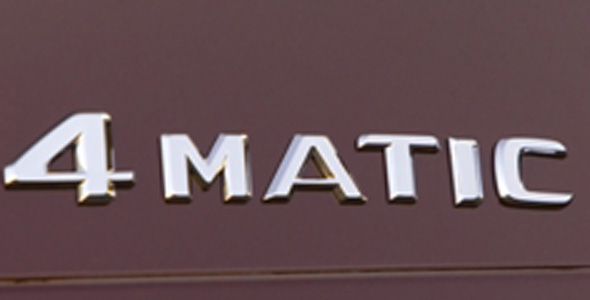| Debut | Technology |
| 1900 | - Mercedes 35 PS: First modern-design car, with aluminium engine, camshaft-driven inlet valves, honeycomb radiator, coil clutch, stamped steel frame, low centre of gravity, impact-free steering and water-cooled brakes
|
| 1903 | - New high-performance engines with camshaft-driven overhead inlet valves in the Mercedes-Simplex 18/22 PS and Mercedes-Simplex 60 PS
|
| 1905 | - DMG presents two major innovations in commercial vehicle design with a radiator positioned at the front end of the frame and cast steel wheels.
|
| 1906 | - Six-cylinder racing engine with machined steel cylinders and overhead camshaft with vertical shaft drive: provides inspiration for aeroengines and high-performance car engines
|
| 1907 | - DMG supplies the first petrol-engined fire-fighting vehicle in Germany
|
| 1908 | - The Berlin fire service takes delivery of the first electrically powered fire-fighting convoy, consisting of four “Mercedes-Electrique” vehicles
|
| 1911 | - Mercedes 37/90 PS with three valves per cylinder and twin-spark ignition
|
| 1914 | - Mercedes 28/95 PS: production car with six-cylinder engine with machined steel cylinders and overhead camshaft with vertical shaft drive
|
| 1923 | - Mercedes 6/25/40 PS and 10/40/65 PS: first supercharged production cars
|
| 1924 | - DMG presents the first diesel trucks with compressed air injection at the Berlin Motor Show. Benz & Cie, since May partners of DMG in an association of mutual interest, presents the first standard-production diesel truck in the world to feature the Benz-developed pre-chamber injection system
|
| 1925 | - Benz & Cie present low-frame buses
|
| 1927 | - Mercedes-Benz L5: the first standard-production six-cylinder diesel truck and the first volume-production diesel truck in the world
|
| 1930 | - Change-over to all-steel bus bodies at Mercedes-Benz
|
| 1932 | - Presentation of Lo 2000 2-tonne light truck, the first diesel-engined light truck in the world
|
| 1939 | - First experimental vehicle with strong side protection, rigid floor and three-part steering column
|
| 1949 | - Patented safety conical-pin locks prevent doors from jumping open in an accident
|
| - The first Unimog, the Daimler-Benz-developed Universal-Motorgerät, is produced
|
| 1951 | - Patented safety body with rigid passenger cell and defined crumple zones front and rear
|
| 1954 | - Single-joint swing axle in the Mercedes-Benz 220
|
| - Mercedes-Benz 300 SL is the first standard-production vehicle with fuel-injected four-stroke engine
|
| 1956 | - L/LP 326: first Mercedes-Benz diesel truck developing 200 hp
|
| 1958 | - Conical-pin door lock with two safety catches
- LP 333: cab-over-engine three-axle truck with two steered front axles
|
| 1959 | - First impact and roll-over tests
|
| - Mercedes “tail-fin” models feature the first safety body in the world, with integrated crumple zones
|
| 1961 | - All Mercedes-Benz models now equipped as standard with anchorage points for front seat belts
|
| - Dual-circuit hydraulic brake system with disc brake on front and rear wheels in the Mercedes-Benz 300 SE
|
| |
| 1963 | - Mercedes-Benz 230 SL: first sports car with safety body
|
| 1966 | - Development of a systematic safety research strategy. The terms “active safety” and “passive safety” are coined
|
| 1967 | - Safety steering system comprising telescopic steering column and steering wheel with impact absorber now standard on all models
|
| - Presentation of the O 305 prototype standard urban line-service bus
|
| 1968 | - Presentation of Mercedes-Benz safety head restraint
|
| - First static three-point seatbelt
|
| - First testing of airbag systems
|
| 1969 | - Official founding of Mercedes-Benz accident research department and start of accident analysis
|
| - Premiere of experimental electric bus OE 302.
- New LP 1632 commercial vehicle with first hydraulically tilting cab.
|
| 1971 | - ESV programme starts (ESV = Experimental Safety Vehicle). ESV vehicles feature three-point inertia-reel seatbelts, belt force limiters, belt tensioners and the first driver and passenger airbags
|
| - Mercedes-Benz 350 SL featuring belt buckle fixed to the seat frame, four-spoke safety steering wheel and dirt-inhibiting side windows and rear lights
|
| 1971 | - OG 305 experimental natural gas bus presented.
|
| 1972 | - First electric van LE 306 with replaceable battery presented.
- OE 302 experimental electric bus goes into scheduled service in Esslingen near Stuttgart.
|
| 1973 | - Three-point seatbelts and head restraints standard for the front seats
|
| - First children’s restraint systems
|
| - First Mercedes-Benz offset crash test
|
| 1974 | - Mercedes-Benz 240 D 3.0: First production car with five-cylinder engine
|
| 1975 | - Mercedes-Benz presents the first prototype with hydrogen drive and hydride store, based on an L 306 minibus
- Line-service trials of an OE 302 DUO bus for combined battery/overhead line operation
|
| 1976 | - New safety steering system with corrugated tube in W 123 series.
|
| 1977 | - Mercedes-Benz 300 SD: first standard-production turbocharged diesel passenger car
- Presentation of the O 305 standard-line service articulated pusher bus
|
| 1978 | - Market launch of anti-lock braking system (ABS): World debut in Mercedes-Benz S-class (116 series)
|
| - Offset crash with 40 per cent frontal overlap incorporated into the tough internal crash-test programme
- Presentation of the O-Bahn track-guided bus system, an alternative solution for local passenger transport
|
| 1979 | - New S-class (W 126) with forked member front-end structure is the first car in the world specially designed to withstand an offset collision
|
| - All Mercedes-Benz models fitted as standard with three-point seatbelts on the outer seats
|
| - Front belt-height adjustment premiered in the S-class
|
| 1981 | - First driver airbag and belt tensioner in the S-class
|
| - MB presents the anti-lock braking system for commercial vehicles.
- Presentation of the O 305 experimental bus with methanol drive
|
| 1982 | - Multi-link independent rear suspension makes its world debut in the Mercedes-Benz compact class (W 201)
|
| 1984 | - All Mercedes-Benz models now fitted with front belt tensioners
|
| 1985 | - Debut for ASD (automatic locking differential), ASR (acceleration skid control) and 4MATIC (engageable four-wheel drive)
|
| - Electronic powershift (EPS) fitted as standard on trucks
|
| 1986 | - Closed-loop three-way catalytic converters fitted as standard on all petrol-engined Mercedes-Benz passenger cars
|
| - ASR introduced for Mercedes-Benz trucks and buses
|
| 1987 | - First passenger airbag supplied as an option for the S-class
|
| 1988 | - Introduction of decompression valve engine brake in Mercedes-Benz trucks and buses
|
| 1989 | - First seats with integrated seatbelts, first automatically extending roll-over bar and first draught stop in Mercedes-Benz SL Roadster
|
| - Introduction of Low Emission Vehicle (LEV) engines for commercial vehicles
|
| - Automatic height adjustment for rear seatbelts in 124 series
|
| 1991 | - All-round disc brakes for heavy-duty commercial vehicles introduced on Mercedes-Benz O 404 coach
|
| 1992 | - All Mercedes-Benz models equipped as standard with driver airbag and ABS
|
| - Passenger airbag standard on S-class
|
| - The one millionth Mercedes-Benz fitted with airbag
|
| - First offset crash test with deformable barrier
|
| - Presentation of Euro 2 engines for Mercedes-Benz commercial vehicles
|
| 1993 | - First integrated child seat optionally available for C-class
|
| - First four-valve diesel engines for C-class and E-class
|
| - Catalytic converter fitted as standard on all Mercedes-Benz diesel cars
|
| 1994 | - First rear-end crash test with deformable barrier
|
| - NECAR (New Electric Car): first-generation fuel-cell prototype from Mercedes-Benz
|
| 1995 | - “Electronic Stability Program” (ESP) introduced as standard in S 600 coupé
|
| - First belt tensioner with integrated belt force limiter in the world
|
| - Disc brakes all round for Sprinter vans
|
| - Joystick gearshift in Vito vans
|
| 1996 | - F 200 coupé study featuring “drive-by-wire” and “Keyless-Go” technology
|
| - First vehicles equipped with Brake Assist (BAS), a world first
|
| - PLD (pump/line/nozzle) high-pressure injection for commercial vehicle engines.
|
| - CAN databuses and control systems for heavy-duty trucks
|
| - First hybrid bus with electric wheel hub motors, traction battery and diesel engine
|
| - Telligent level control introduced
|
| 1997 | - New V6 and V8 engines with three valves per cylinder and twin-spark ignition
|
| - Sidebags for driver and front fitted as standard throught the Mercedes-Benz passenger car range
|
| - A-class with sandwich floor and engine which slides down and underneath the passenger compartment in a frontal collision
|
| - New common-rail direct-injection (CDI) passenger car diesel engines
|
| - NECAR 3 (based on the A-class): first fuel-cell prototype in the world with on-board hydrogen reformation
|
| 1997 | - Introduction of modular design principle in bus manufacture to produce vehicles of different length
|
| - Introduction of networked freely programmable CAN databus systems in bus manufacture
|
| - NEBUS: first fully operational fuel cell bus
|
| 1998 | - First window bags supplied as optional equipment for the E-class
|
| - New S-class featuring 30 technical innovations. e.g. passenger airbag with two-stage deployment, rear belt tensioners and belt force limiters, automatic child seat recognition (ACSR), air suspension with adaptive damping system (AIRmatic), COMAND operating/display system
|
| 1999 | - Mercedes-Benz CL coupé: first production vehicle in the world with Active Body Control (ABC)
|
| - CDI engines fitted in the van segment
|
| - All Mercedes-Benz models standard-equipped with ESP
|
| - Distronic autonomous intelligent cruise control goes into production
|
| - ZAS – automatic cylinder cut-out introduced in S 600 and CL 600
|
| - CDI engines fitted in the van segment
|
| - Joystick gearshift for coaches
|
| - “Cito” midibus with standard diesel-electric drive
|
| 2000 | - World’s most powerful passenger car diesel engine fitted in the S 400 CDI
|
| - CL 55 AMG F1 Limited Edition is first roadgoing vehicle to be equipped with ceramic brakes (C-BRAKE)
|
| - Introduction of Telligent proximity control, Telligent stability control, Lane Assistant
|
| - Sprintshift automated manual transmission for Sprinter vans
|
| - New-generation Unimog with cab made of fibre composites, VarioPower high-performance hydraulics and VarioPilot transferable steering
|
| - FleetBoard telematics-assisted Internet service introduced
|
| |


